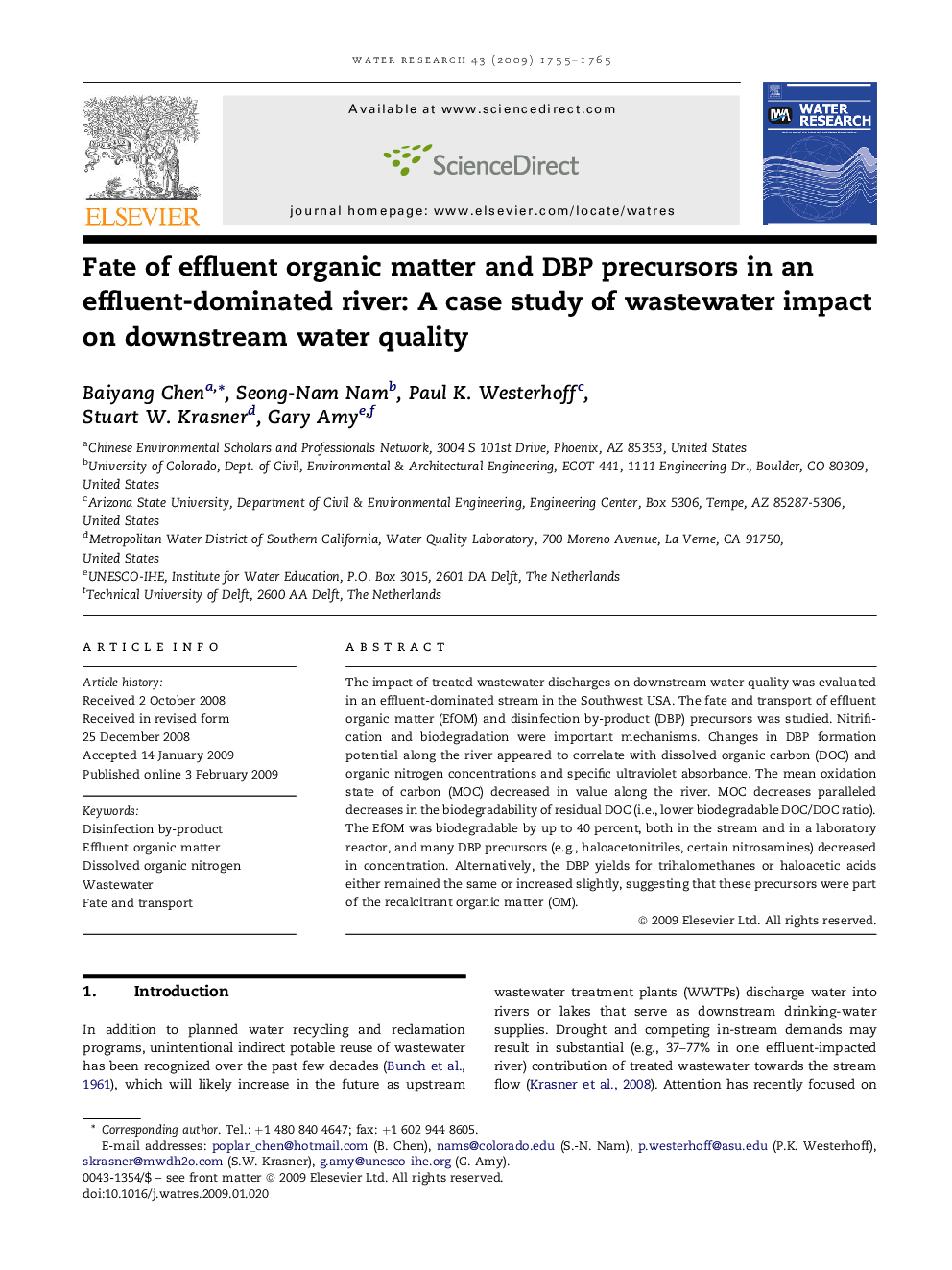| Article ID | Journal | Published Year | Pages | File Type |
|---|---|---|---|---|
| 4485158 | Water Research | 2009 | 11 Pages |
The impact of treated wastewater discharges on downstream water quality was evaluated in an effluent-dominated stream in the Southwest USA. The fate and transport of effluent organic matter (EfOM) and disinfection by-product (DBP) precursors was studied. Nitrification and biodegradation were important mechanisms. Changes in DBP formation potential along the river appeared to correlate with dissolved organic carbon (DOC) and organic nitrogen concentrations and specific ultraviolet absorbance. The mean oxidation state of carbon (MOC) decreased in value along the river. MOC decreases paralleled decreases in the biodegradability of residual DOC (i.e., lower biodegradable DOC/DOC ratio). The EfOM was biodegradable by up to 40 percent, both in the stream and in a laboratory reactor, and many DBP precursors (e.g., haloacetonitriles, certain nitrosamines) decreased in concentration. Alternatively, the DBP yields for trihalomethanes or haloacetic acids either remained the same or increased slightly, suggesting that these precursors were part of the recalcitrant organic matter (OM).
